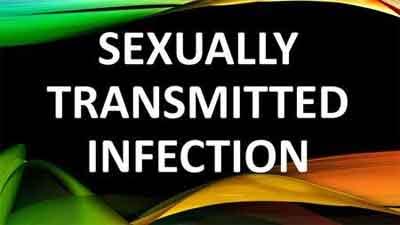- Home
- Editorial
- News
- Practice Guidelines
- Anesthesiology Guidelines
- Cancer Guidelines
- Cardiac Sciences Guidelines
- Critical Care Guidelines
- Dentistry Guidelines
- Dermatology Guidelines
- Diabetes and Endo Guidelines
- Diagnostics Guidelines
- ENT Guidelines
- Featured Practice Guidelines
- Gastroenterology Guidelines
- Geriatrics Guidelines
- Medicine Guidelines
- Nephrology Guidelines
- Neurosciences Guidelines
- Obs and Gynae Guidelines
- Ophthalmology Guidelines
- Orthopaedics Guidelines
- Paediatrics Guidelines
- Psychiatry Guidelines
- Pulmonology Guidelines
- Radiology Guidelines
- Surgery Guidelines
- Urology Guidelines
Screen all MSM at least once a year for chlamydia and gonorrhea: CDC

Men who have sex with men (MSM) are disproportionately affected by sexually transmitted diseases (STDs) and human immunodeficiency virus (HIV) infection. National HIV Behavioral Surveillance, NHBS team conducted anonymous behavioral surveys on a rotating basis among populations with elevated HIV risk and found that in a community venue-based sample of sexually active MSM, approximately one in eight participants was positive for either rectal or pharyngeal chlamydia or gonorrhoea.
Sexually transmitted diseases (STDs) disproportionately affect gay, bisexual, and other men who have sex with men (MSM) in the United States (1). Because chlamydia and gonorrhea at extragenital (rectal and pharyngeal) anatomic sites are often asymptomatic, these anatomic sites serve as a reservoir of infection, which might contribute to gonococcal antimicrobial resistance (2) and increased risk for human immunodeficiency virus (HIV) transmission and acquisition (3). To ascertain prevalence of extragenital STDs, MSM attending community venues were recruited in five U.S. cities to provide self-collected swabs for chlamydia and gonorrhea screening as part of National HIV Behavioral Surveillance (NHBS).
Most MSM STD prevalence data are from STD and HIV clinic attendees.Among community venue–attending MSM in five cities in 2017, approximately one in eight had an extragenital chlamydial or gonococcal infection. Rectal gonorrhoea prevalence was higher in MSM infected with HIV than in those not infected with HIV. The findings appear in MMWR.
Researchers recruited 2000 MSM at community venues (e.g., bars, gyms) in five U.S. cities. Participants provided rectal and pharyngeal swabs, which were tested for chlamydia and gonorrhea.
Roughly 13% of participants tested positive at one or both anatomic sites. Rectal chlamydia was more common than rectal gonorrhea (7.3% vs. 4.5%), while pharyngeal gonorrhea was more common than chlamydia (4.6% vs. 1.4%). HIV-infected participants had a higher prevalence of rectal gonorrhea (8.2%).
A third of the men said they had not been screened for STIs in the past year. Current guidelines recommend that men who have receptive anal and oral sex with men should be screened at least annually for rectal and pharyngeal gonorrhea and chlamydia. The authors write that higher-risk man may need to be screened every 3 to 6 months.
Sexually active MSM should be screened at least annually for chlamydia and gonorrhea at all exposed anatomic sites; some MSM might benefit from more frequent screening.
For further reference log on to :
MMWR article

Disclaimer: This site is primarily intended for healthcare professionals. Any content/information on this website does not replace the advice of medical and/or health professionals and should not be construed as medical/diagnostic advice/endorsement or prescription. Use of this site is subject to our terms of use, privacy policy, advertisement policy. © 2020 Minerva Medical Treatment Pvt Ltd